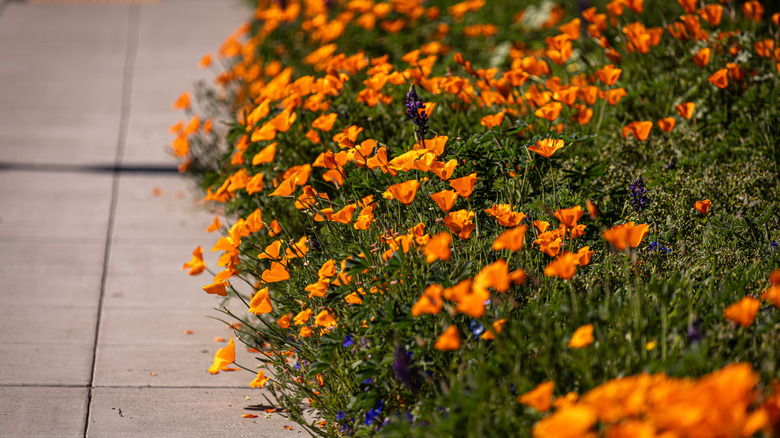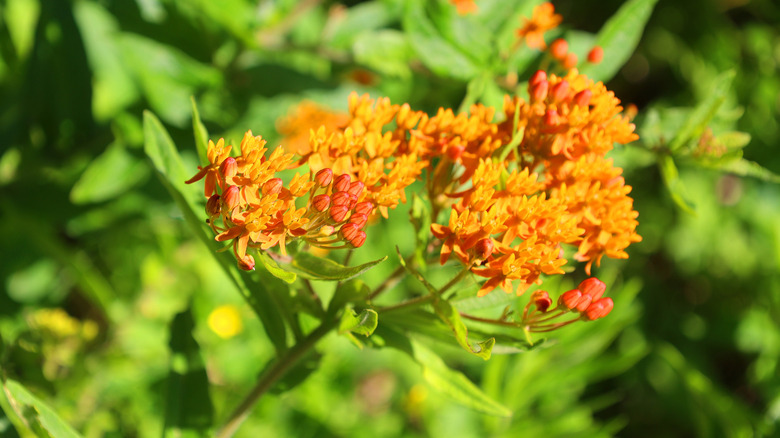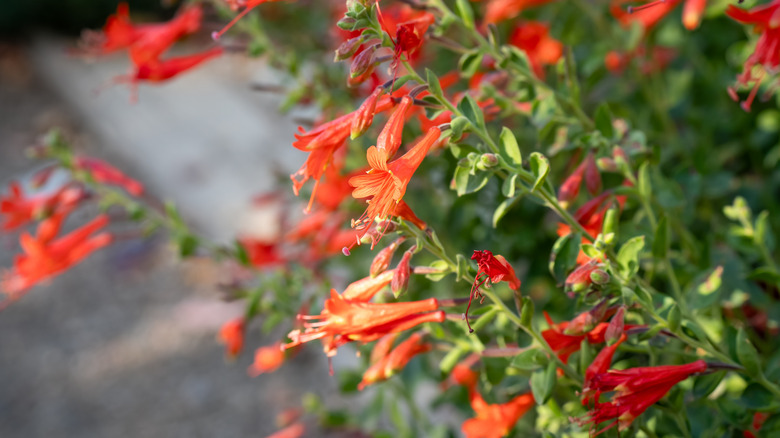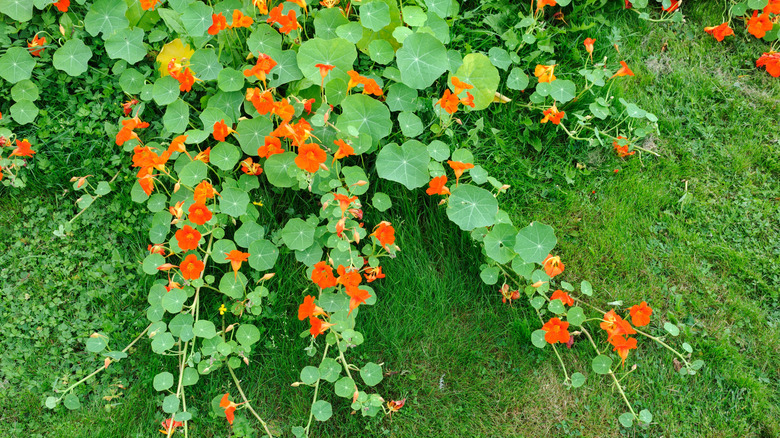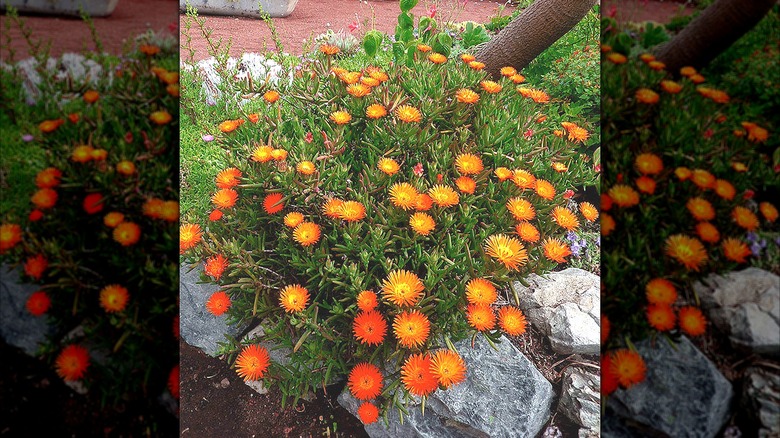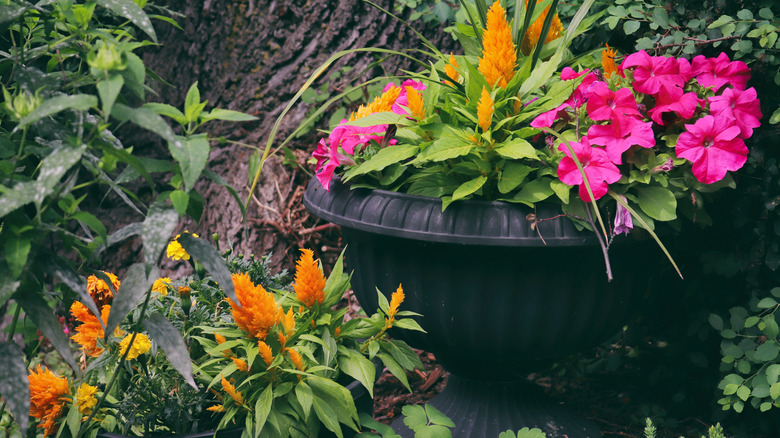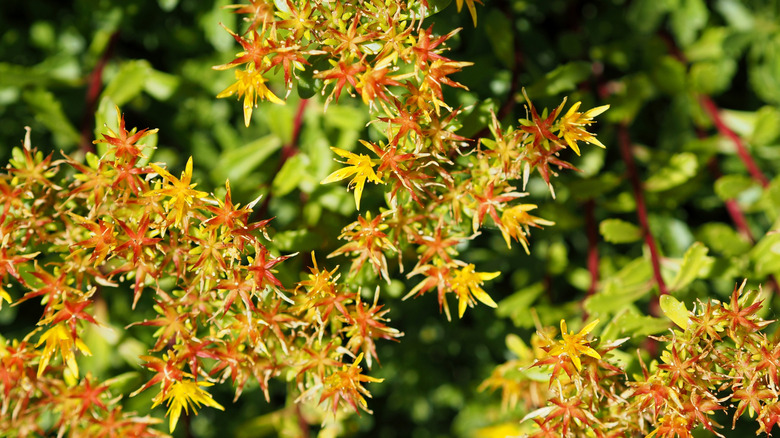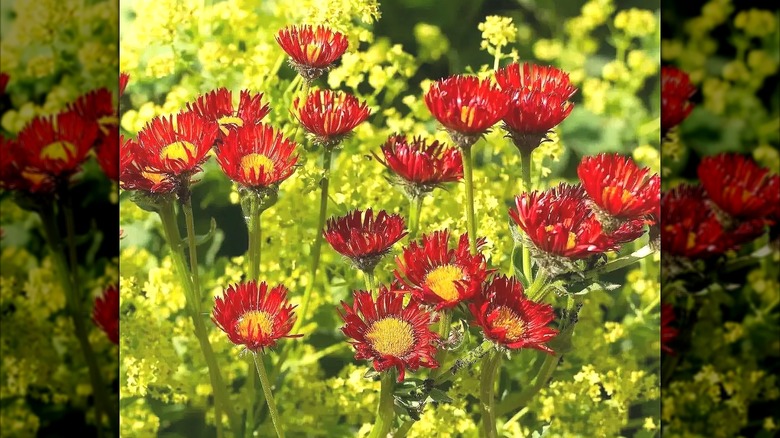8 Orange Flowering Ground Covers To Beautify Your Yard
When you want to enhance your curb appeal, few plants make as bold and captivating a statement as orange flowering ground covers. These cheerfully showy, low-maintenance plants bring a pretty aesthetic to landscapes with practical benefits like smothering weeds in your yard before they get out of control. Whether you're creating a vibrant garden that's the envy of your neighbors or want a drought-tolerant ground cover that basically takes care of itself, dynamic orange plants are waiting to be discovered.
Orange means happy, energetic, and attention-getting in color psychology. And who doesn't want that level of enthusiasm in their yard? From soft apricot tones to fiery tangerines, these ground cover plants can create eye-catching exhibitions in your yard. One of the best things about orange-flowering ground covers is their range of species, both native and non-invasive. Drought-tolerant succulents like orange stonecrop (Sedum kamtschaticum) are perfect for hot, dry areas, or native plants like California poppies (Eschscholzia californica) that can grow all over the U.S. with blooms that could take your breath away. Non-invasive ground covers like the hummingbird trumpet (Epilobium canum) have long-lasting blooms. But the best perk is they help support ecosystems by attracting a slew of pollinators — bees, butterflies, and hummingbirds.
While there are plenty of stunning orange flowers you should grow in your garden, these orange ground cover plants form dense mats with bold blooms that help keep your yard looking its best. Be sure to check your USDA Plant Hardiness Zone.
California poppy
As the state flower of The Golden State, California poppies can flourish virtually everywhere, but do best in Zones 7 through 10. These wildflowers are vibrant and drought-tolerant and known for their cup-shaped orange blooms. They're self-seeders, low maintenance, and make super pretty borders and bring a dynamic element to your yard, while the fern-like foliage the flowers sit on top of adds a breath of texture. California poppies will close their vivid orange blooms at night or in cloudy weather.
Butterfly milkweed
Butterfly milkweed (Asclepias tuberosa) is a hardy perennial with bright flat-topped clusters of orange flowers that butterflies, native bees, and bumble- and honeybees simply can't resist. As high-maintenance as it might appear, butterfly milkweed plants don't require a lot of water and can thrive in full sun and well-drained soil. This ornamental flower's blooms are well-suited for Zones 3 through 9 from late spring to early fall, making any yard look incredibly lush and decorative.
Hummingbird trumpet
Hummingbird trumpets have vibrant, tubular, orange-red flowers that bloom from late summer to fall and can grow up to 18 inches tall. These hardy plants offer landscapes a pop of green compact shrubbery, making them excellent ground covers. Once established, this low-maintenance perennial will thrive in heat and drought conditions. Hummingbirds and butterflies love it, but deer tend to steer clear of hummingbird trumpet bushes. This pretty plant thrives in Zones 7 through 10.
Trailing nasturtium
Looking for a ground cover plant with a trailing habit, and you live in Zones 9 through 11? The trailing nasturtium (Tropaeolum majus) has you (and your lawn) covered — literally. With lily pad-like leaves, brightly colored blooms, and vines growing as long as 6 feet, this fast-growing perennial is comfortable in flower beds or surrounding shrubs. They require partial to full sun, and the best part is that trailing nasturtium plants are edible and can bring a peppery flavor to salads.
Orange form ice plant
The well-behaved, drought-tolerant, and deer-resistant orange form ice plant (Lampranthus aureus) is an easy-to-grow succulent that brings vibrant orange, daisy-like flowers to your yard from spring through fall. The fleshy, green foliage creates a dense mat, providing excellent weed suppression. Fun fact: The blooms have regular working hours, opening at 9 a.m. and closing at 5 p.m. It's best suited for Zones 4 through 11.
Feather celosia
Feather celosia (Celosia argentea) plants make great ground cover, thanks to their bushy growth habit that adds an instant burst of color to landscapes. This ornamental plant thrives in full sun and is easy to recognize with its feathery plumes. Feather celosias grow from 12 to 36 inches tall, while their pretty blooms can reach up to 5 inches. Although not a perennial, it will return every year in the right conditions, like in Zones 10 and 11.
Orange stonecrop
Orange stonecrop (Sedum kamtschaticum) plants are hardy, mat-forming succulents, making them a great option for ground cover, especially in places that don't get much rain. Yellow in the summer, their small star-shaped blooms and leathery foliage pop with orange in late spring to summer. This clump-forming perennial is resistant to deer and pests, spreads moderately without being invasive, and requires little upkeep in Zones 8 through 10.
Mexican fleabane
Some ground cover plants love shade, but Mexican fleabane (Erigeron karvinskianus) may be your next obsession when your outside space has plenty of sunshine. As an almost perfect doppelganger for daisies, this perennial blooms prolifically in early summer, providing long-lasting color with minimal care. Mostly found with white, pink, or purple thin petals, orange fleabane will add uniqueness to your yard, especially for Zones 6 through 9. It attracts pollinators like bees and butterflies while being deer-resistant and drought-tolerant.

